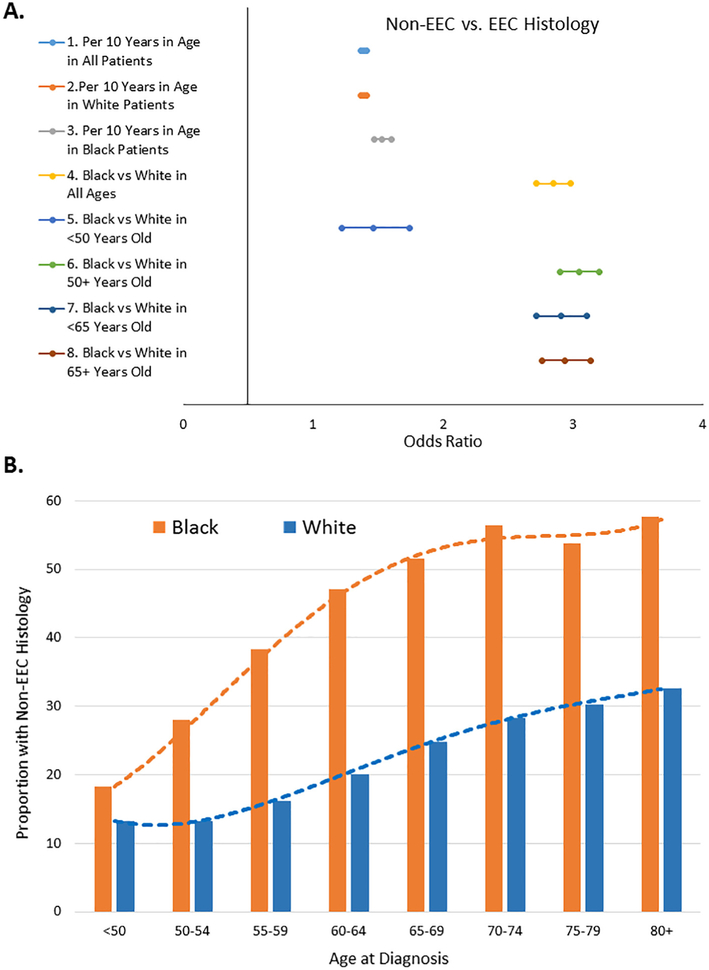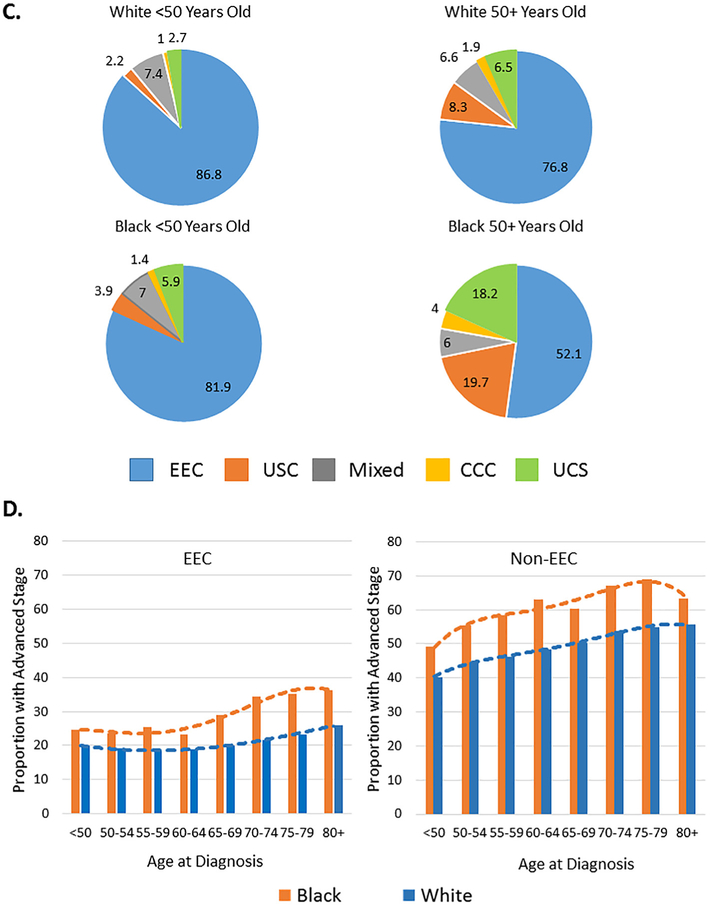Fig. 1.
Impact of age on histology and stage among white and black endometrial cancer patients. A, This Forest plot displays odds ratio and 95% confidence intervals from logistic regression model of the effect of age at diagnosis and race on the odds of presenting with non-endometrioid endometrial cancer (non-EEC) vs. endometrioid endometrial cancer (EEC). Older white and black women in all subgroups were more likely to present with non-EEC than EEC histology. B, This bar chart illustrates the proportion of black vs. white patients with non-EEC histology for each 10-year increase in age of diagnosis. There was a dynamic incremental shift in prevalence of non-EEC for each 10-year increase in age at diagnosis. C, The proportion of EEC, uterine serous cancer (USC), mixed epithelial endometrial cancer (mixed), uterine clear cell cancer (UCC) and uterine carcinosarcoma (UCS) is displayed in pie charts for the subset of white or black patients diagnosed at <50 or at ≥50 years of age. D, This bar chart displays the proportion of black vs. white patients with advanced stage EEC or advanced stage non-EEC across a continuum of intervals of age at diagnosis including <50, 50–54, 55–59, 60–64, 65–69, 70–74, 75–79, 80+ years old. There was an incremental higher prevalence of advanced stage disease with old age at diagnosis in non-EEC than EEC histology among black vs. white patients.


